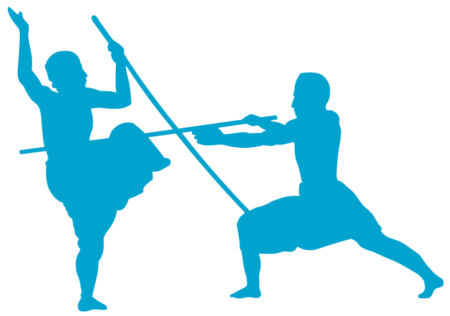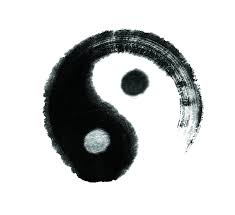As we saw in Part 1 of this blog a significant change has occurred in the way Ayurveda is taught and practiced in modern times. Part 2 of this blog explains why this has happened.
First it is important to understand the Indian or Hindu mind and secondly how modern history has affected the culture and thinking of this nation.
There is no difference in the Hindu/Buddhist mind between religion and spirituality. They are the same but it is understood there are different levels of understanding, growth and evolution. As discussed in Part 1 the Indian mind is subtle and symbolic rather than literal. This has resulted in many misunderstandings and misinterpretations.
Hinduism allows worship from the lowest to highest forms. Traditionally Ayurveda is nothing but reflections of various concepts from the Hindu / Buddhist religion. As we have already seen Modern Ayurveda is secular and it sees Ayurveda as a system of medicine.
Ayurveda, though introduced and codified in India, has spread its roots worldwide. Greek traders took the concept to Greece and developed Unani, a system of medicine based on Ayurvedic principles. Buddhist monks introduced Ayurveda and martial arts to Tibet and South East Asia and China.

From here evolved the Thai version of ‘Ayurved’ or Thai Traditional Herbal Medicine and Thai Traditional Massage, and in China Traditional Chinese Medicine (TCM) and widely known arts such as Kung-Fu. Acupuncture was part of traditional Ayurveda also, known as ‘suchi veda’, the science of piercing or spearing, but is no longer practiced in Ayurveda.

Over the years, from the principles of Ayurveda, there arose in these other parts of the world very distinct and unique local systems of healing. Today many have forgotten their timeless and ancient roots. This is for many reasons but primarily those of politics, commercial gain, racial pride or ignorance. Ironically, in the West systems such as Traditional Chinese Medicine are more widely recognised than Ayurveda, the mother or root from where such systems originated.
Ayurveda in India lost the patronage it enjoyed under Hindu/Buddhist rule due to the occupation of the Muslims and the British over an almost 1000 year period. Some parts of the tradition were no longer accepted under the new rulers so the continuity of the system was virtually destroyed and forced underground.
When India regained its independence the Indian government made all efforts to reintroduce all things ‘Indian’ and Ayurveda was one of them.
Sadly however, the original concept of Ayurveda as a system of Yoga was unable to be reintroduced in its original form.
This is because traditionally, the system was based on the Gurukulam or Hermitage where young students lived and studied with the teacher and family as a student and child of that family.
The fundamental practice and line of study was spirituality based on Sanatana Dharma (eternal truth or Hinduism). A similar practice existed with Indian Buddhist students in later times.
However, modern independent India as a secular state did not sponsor the traditional system due to politics.
Indian Christians and Muslims could not fit into this traditional Yogic system due to their views on religion and life. Because of this a system similar to allopathy was introduced using certain aspects of Ayurvedic treatment but missing out on the core of Ayurveda, that is first concerned with the individual as a whole and not just the disease.
This explains why Ayurveda is practised so differently today.
So the India of classical or traditional Ayurveda and the India of today can be seen to be very different. India is not the land many people of the western world think it to be.
It was a land of the wise and of the learned and of the realized but maybe a thousand years ago!
Having almost lost its character and culture, the bulk of the people today no longer see themselves as spiritual beings first and body and mind second. For the past 1000 years they have been ruled by foreigners who have introduced much of their values and ideas and mostly forcefully. Many became even embarrassed of their culture due to the opinion of the colonial rulers who saw these traditions as uncivilised. Much of their own traditions and culture and arts were denied them.
Long before that, they have already become weak and splintered into hundreds of minor states and further weakened by infighting.
Today the the majority of the Indians no longer understand nor appreciate many things Indian, especially those of the esoteric and of the spiritual. Many are stuck with the crudest form of worship, bordering on idolatry.
Many do not know anything about the true meaning of Yoga nor of subtle sciences such as Ayurveda. All of such, if practiced is in its basic form or a part only. But yet when approached, they talk as though they are the wisest of the wise. Because they are aware of their ancient roots, they feel that they qualify automatically or by default!
Focusing only on symptoms and the treatment of disease is something many people are becoming increasingly wary of today.
This has been the approach of Modern Conventional medicine or Allopathy and now those in India seem to have taken up what the Western culture has already wearied of!
This is indeed an irony as it is the Indians who first introduced that concept of total well-being and the principles of Holistic and total living. Living as a Whole in total harmony with nature is what Holistic Living is about and this eventually will lead to deeper spiritual realization.
So how do the Traditional and Modern approaches to Ayurveda relate to Yoga?
Again a clear understanding of Yoga is needed here. Yoga is the Whole, where All is One and One is All. Remembering the Wave (the body and mind) is never separate from the Ocean (Truth or Yoga).
This is the goal and purpose of Traditional Ayurveda as with all Yogic systems or paths.


